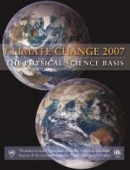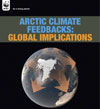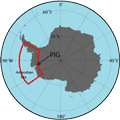Adapting to climate change is a complex matter for human communities, as Mark Carey makes abundantly clear in his newly published book In the Shadow of Melting Glaciers: Climate Change and Andean Society. Carey is a historian and explores nearly sixty years of disaster response in Peru since the beginning of his story in 1941 when an outburst flood from a glacier lake in the Cordillera Blanca mountain range sent a massive wave of destruction on the city of Huarez, obliterating a third of the city and killing an estimated 5000 people.
There have been further disasters since that one. Peruvians have, Carey points out, suffered the wrath of melting glaciers like no other society on earth. Further outburst floods followed in 1945 and 1950, and glacier avalanches in 1962 and 1970 (the latter following an earthquake) killed many thousands.
The Huarez disaster prompted three national government strategies to protect the population from the hazards that the outburst flood had revealed: drain glacial lakes, prohibit urban reconstruction in the flood plain, and build retaining walls in Huarez to contain the glacier-fed Quilcay River. It all sounds quite rational. But only the first was able to proceed. Class and race issues, as Carey sees it, prevailed to counter the plans for hazard zoning and retaining walls. Huarez’s upper and middle classes wished to reconstruct the city in order to re-create the physical characteristics that helped symbolize urban authority and social standing in relation to the rural indigenous population. The socioeconomic order disrupted by the flood was to be restored. Resistance to hazard zoning and relocation was not confined to Huarez but also occurred in other communities subsequently affected by disastrous outburst floods or glacier avalanches. One local writer reflecting on the triumph of “human will” which led to rebuilding in the same places of destruction concluded: “…[T]hey will be there forever, suffering. stoic, crying through their destiny. And that is the beauty of it, the poetry, the immortality of a people.” Defiant stuff, and part of the complexity Carey’s book explores.
But though people may have been unwilling to move from where they lived, they certainly supported the draining of glacial lakes and other measures to protect them from further disasters. Not that such measures are simple. Peru struggled to get a picture of the extent of the threat from glacial lakes in the Cordillera Blanca. Indeed it was not until 1953 that an inventory of how many such lakes there were was finally achieved. There were 223. Today there are more than 400. It’s a growing problem. Once identified, lakes need to be assessed for the danger they pose. This is no easy matter. Accessibility is difficult. The moraines behind which the lakes build vary greatly in their capacity to retain increasing volumes of meltwater. The incline of the glacier and the likelihood of large falls of ice causing large waves has to be taken into account. When drainage is undertaken the logistics of the operation can be daunting for both machinery and manpower. Carey describes some of the on-site work as well as the difficulties at the national level of offices trying to carry out the task with limited resources and varying levels of support from successive governments.
Hydroelectricity is a complicating factor in the situation. The Santa River flows north through the valley parallel to the Cordillera Blanca. When it turns west and descends steeply to the coastal plain it feeds the large Cañón del Pato hydro-electric facility. The power station was itself the victim of the 1950 outburst flood, which destroyed it when it was nearing completion. It was the flood’s devastation of this facility and of the Chimbote-Huallanca railway line which transformed the piecemeal disaster prevention measures of the 1940s into the more effective and far-reaching response of a new government agency, the Lakes Commission. Carey notes that it was the setback to national industrialisation plans in 1950 rather than the deaths of thousands in the 1940s which led to this much better resourced body. The hydro-electric power station was rebuilt and, following privatisation in 1996 under Fujimori’s neoliberal progammes, is now owned by Duke Energy. Its generating capacity has increased considerably with successive upgrading.
Glaciers are not only hazards but also resources and Carey records a shift in emphasis after the 1980s from the hazard focus to the measurement and management of glaciers as hydrological resources, particularly for electricity generation and for irrigation. He notes that the information gathered has been of benefit to Duke Energy, a private company based in the US and responsible to shareholders rather than the Peruvian public. Duke Energy has been involved in attempts to retain glacial lake waters as reservoirs for regulating the flow of the Santa River and has encountered considerable local resistance. While glacier retreat has enabled expansion of water use in the region, this is a trend which is likely to change if the glaciers continue to diminish.
Hazards haven’t gone away because of the focus on resource, but the neoliberal agenda of the 1990s brought a severe reduction in the public funding of disaster prevention programmes. Neoliberalism exacerbated vulnerability to natural hazards, and although the state disaster prevention agency reopened in 2001 it never regained the status, budget and support it had in previous periods. Carey is even-handed in his treatment of neoliberalism, but sees it as a theory which collided with historical reality. Some of that reality is manifest in the local resistance which has prevented Duke Energy from managing the waterscape uncontested.
Throughout the book Carey devotes much attention to the ways in which various groups in Peruvian society and the relationships between them have played a part in forming the country’s response to melting glaciers. Many interests have had to be — sometimes have insisted on being — consulted and taken into account. Socio-economic divisions have played a part. Increasing international interest has become part of the interaction. Carey the historian has brought a valuable insight into the way a society functions or malfunctions in facing up to the impacts of climate change. He emphasises the need for understanding social relations and power dynamics at the same time as deciphering how much water will flow from a glacier in fifteen years’ time.
As Carey recognises, the acceleration of glacier melt is an issue not just for Peru but worldwide. Bolivia, Ecuador, Colombia, Nepal, India, Russia, Switzerland, the US and scores of other countries have populations which live near or depend on water from melting mountain glaciers. If there is a message to others from the Peruvian experience it is that disaster mitigation is a political and social process as much as it is a matter of science and engineering. Social conflicts, for example, may be more urgent to people than the potential floods or even water-shortage issues that experts see as the most pressing. It’s not only technical and scientific skills that will be needed but also a sense of social relations and of the perceptions of the populations affected.
As history Casey’s book is an engrossing read. What he recounts hardly leaves one sanguine about the ability of societies to navigate the adaptation requirements ahead as climate change begins to bite, but it offers some useful signposts.
[More at: Fishpond (NZ), Amazon.com (US), Book Depository (UK)]


 An
An 
 Sea level will rise by more than a metre by 2100 according to the authors of the third chapter in the World Wide Fund for Nature’s new Arctic report,
Sea level will rise by more than a metre by 2100 according to the authors of the third chapter in the World Wide Fund for Nature’s new Arctic report, 